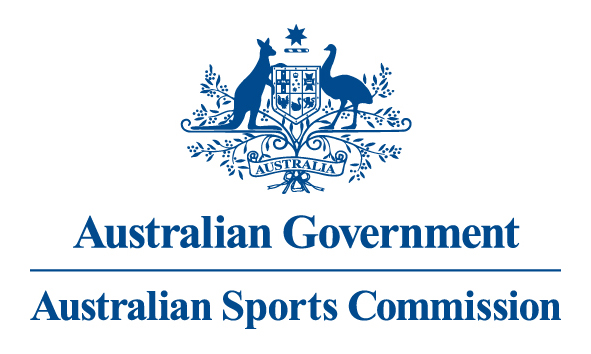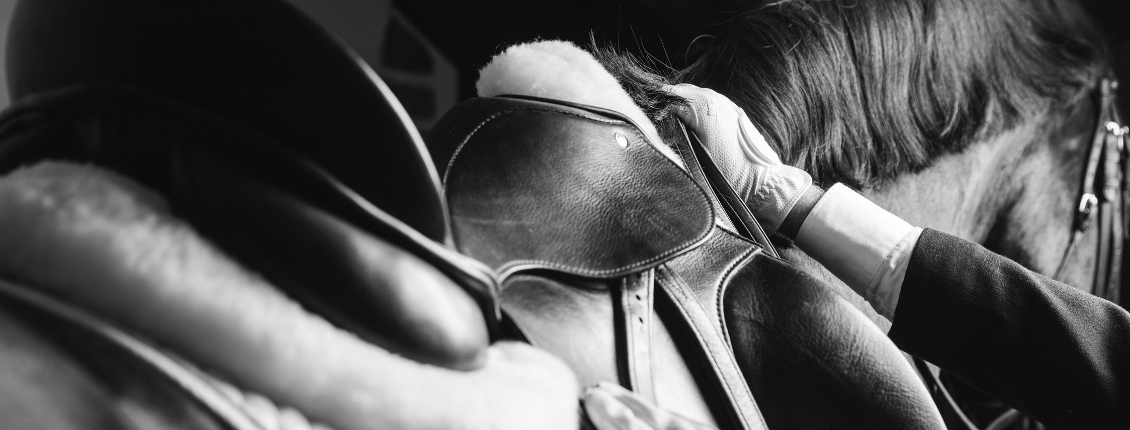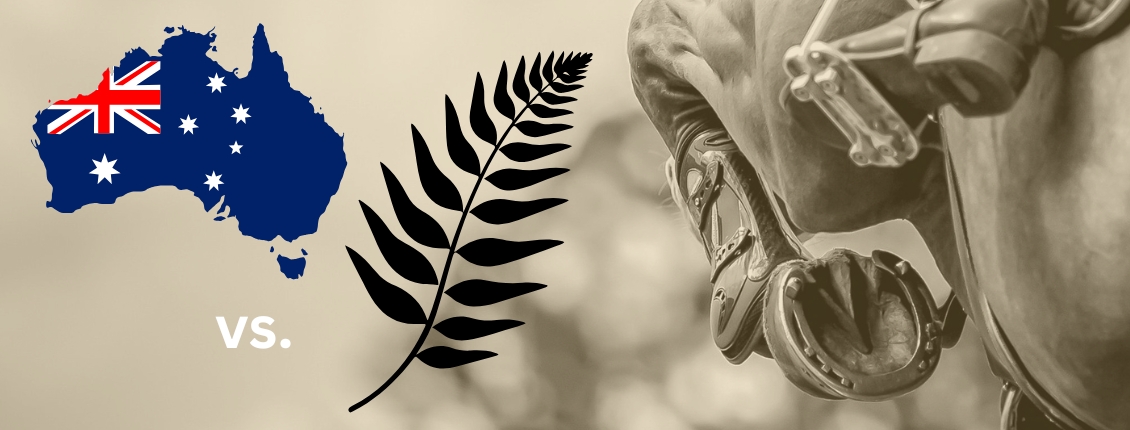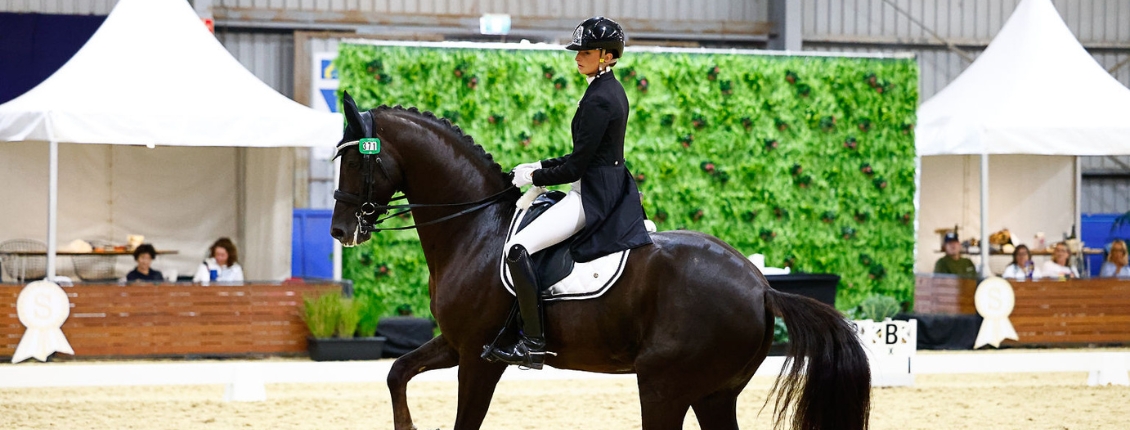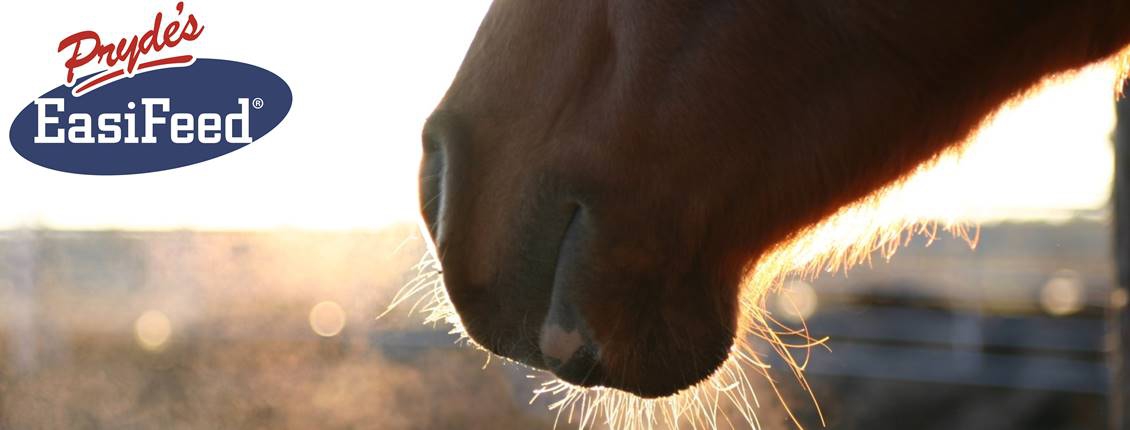
Tips for feeding horses in hot and humid climates
This content is brought to you by Pryde's EasiFeed. Access the innovative NUTRITION HUB with information and recommendations for your horse's diet and health. Knowledge is key!
Anhydrosis, or the inability to sweat is a serious condition that affects horses in hot and humid climates. Horses rely heavily on sweating to cool themselves down and keep their core body temperature within a normal range. Sweat wets the horse’s skin and then as it evaporates it takes heat with it, effectively creating an evaporative cooling system for the horse.
In some horses however, for reasons largely still unknown a horse’s sweat glands either partially or fully quit producing sweat. These horses find it very difficult to stay cool and need to resort to offloading heat via their lungs by breathing harder and faster than you would expect them to, which is why horses with this condition are often said to ‘have the puffs’. In many situations though, puffing is not effective enough, so horses that can’t sweat are at serious risk of hyperthermia which wreaks all sorts of havoc in the body and if not dealt with effectively will eventually result in death.
If you have a horse with anhydrosis it is strongly recommended you seek veterinary advice. Aggressive environmental management of these horses to keep them cool is the best way to manage their condition. Useful management strategies include:
- Always provide access to shade and cool to cold drinking water.
- Keep them under fans and water misters where possible during the day.
- Turn them out at night only if possible.
- Only work them if your veterinarian advises it is safe to do so and then only work them during the very early morning when it is coolest and only to the level they can comfortably handle.
- Cool them down quickly and effectively with hosing and fans post work until their rectal temperature has returned to normal.
- If these strategies aren’t effective in keeping your horse’s body temperature within a safe range, the horse will need to be moved south to a cooler climate. Often, and again for reasons we don’t understand, horses will start to sweat again when they move to a cooler environment.
The right feeding strategy may help
While we don’t understand what causes anhydrosis it does appear that for some horses certain nutritional strategies can help. Tips for feeding horses with anhydrosis include:
1. Always provide access to free choice rock salt – it is likely some horses stop sweating simply because they run out of electrolytes. The major electrolytes found in sweat are sodium, chloride and potassium. The two mostcommonly deficient electrolytes in a horse’s diet are sodium and chloride and these are the components of ordinary old salt. A horse will seek salt out when it knows it needs it, so providing free access to rock salt allows them to eat as much or as little as they need to meet their requirements.In very hot and humid climates I would avoid the use of salt blocks as it is difficult for a horse tolick enough salt off to meet requirements when they need a lot of salt.
2. Use an electrolyte supplement, especially if the horse is in work – electrolyte supplements allow a horse to very quickly replenish electrolyte supplies after work. Be sure to look for an electrolyte with a balance of electrolytes that match the amounts found in a horse’s sweat and for a product that is not full of glucose or sugar with very little of the actual electrolyte minerals (i.e. sodium, chloride, potassium, calcium and magnesium). Pryde’s EasiLyte meets both of these criteria and it also contains an ingredient called betaine. Betaine is an osmolyte that loves to hold on to water. A horse’s body cells will take up betaine and then betaine helps those cells to hang on to water and remain hydrated. Betaine has been shown in studies to reduce the effects of heat stress in cattle (Gaughan et al 2005).
3. Feed controlled amounts of protein – diets that are too high in protein have a couple of negative effects on horses that can’t sweat.
The first is that protein generates a lot of heat during the process of digestion and metabolism which adds to the heat load a horse needs to get rid of to keep its body temperature normal. For most horses this is usually not an issue as they are able to sweat and easily dissipate the excess heat. But when a horse isn’t able to sweat, it just makes their job of staying cool even more difficult.
The second is that when protein is fed in excess the horse needs to get rid of the excess nitrogen contained in the protein. In a healthy horse the kidneys perform this task without hassle. BUT a lot of water and electrolyte are excreted with the nitrogen, so potentially it can lead to dehydration and electrolyte deficiency, neither of which will help a horse that can’t sweat properly in the first place.
To keep protein in diets low, feed forages and feeds that are high in protein like lucerne, copra meal, lupins, faba beans, sunflower/soybean/canola meals, pollard and rice bran in controlled amounts and rely more on grassy pasture and hay, oils and lower protein cooked cereal grains (where it is safe to do so).
4. For horses in work, consider using a lower forage diet. When the fibre contained in forages is fermented in the hindgut a lot of heat is produced which then increases the amount of heat a horse needs to get rid of to keep its body temperature normal. By reducing the amount of forage and therefore the amount of fibre in a diet you will reduce the heat load placed on a horse. To maintain the horses required energy intake you can add oil (the best option as it produces the least heat) and/or cooked grains to the diet. It is essential that you feed well-cooked grains, with extruded grains being the best option, as the starch contained within these grains will be digested in the small intestine. Feeding uncooked or poorly cooked grains will lead to a lot of fermentation and heat production in the hindgut and should be avoided for all horses in hot climates.
Please note: Never reduce forage intake below 1 kg/100 kg of bodyweight and be mindful of the increased risk of stomach ulcers for horses on low forage diets. Using slow feeders is highly recommended. It is also essential to have your horse’s stomach full of forage before it is worked.
5. Make sure the diet you feed is balanced. There is some anecdotal evidence to suggest that some mineral and vitamin deficiencies may contribute to a horse’s inability to sweat. The best way to counteract this is to make sure what you are feeding is meeting all of your horse’s requirements for macro and trace-minerals and vitamins. The Pryde’s EasiFeed Selector or FeedXL.com can be used to create a balanced diet.
Dr Nerida Richards
Equilize Horse Nutrition Pty Ltd
21st January 2016
Courtesy of Pryde's EasiFeed


